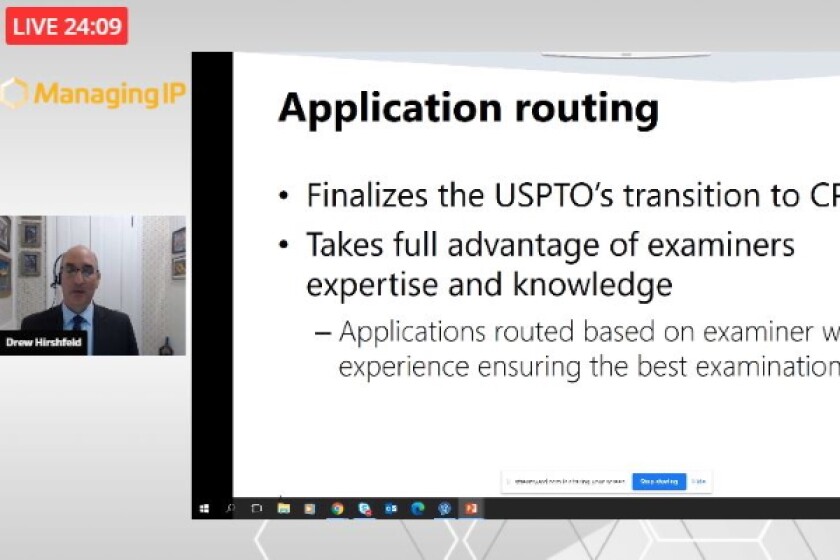The USPTO patents organisation has made a lot of changes this month, the most important of which patents commissioner Drew Hirshfeld laid out to listeners at Managing IP’s US Patent Forum yesterday.
Hirshfeld, who was appointed for a second five-year term in his role last July, explained that on October 1, his organisation changed exam times, put in a new performance appraisal plan for employees, and revolutionised how the office dockets and routes cases to examiners.
“We are just at the front end of those very significant changes, and many of them are correcting things that haven’t been changed, quite frankly, in 30 to 40 years,” he said. “I feel really good about this – I and others have been working on these changes for years."
On the clock
“But that hasn’t always been the case,” he added.
He said that the most recent round of changes to exam times, and changes from 2019, were implemented to bring the USPTO up to date and to bring anomalous areas into line with the office's standards.
In October 2019, Hirshfeld and his team raised the floor for some mechanical areas, and other areas that had the lowest time for prosecution, to give them a more reasonable amount of time to examine cases.
“Before that, some of these times were way out of line with where they should have been,” he said.
His team also gave time to examiners for attributes. If an application had more than 20 claims, for example, the patent organisation would give examiners more time to look over it.
“We basically tried to make the time somewhat tailored to the exact application,” he said.
This year, the patent organisation changed its required exam times to fall in line with the co-operative patent classification (CPC) system, a scheme that was jointly developed by the EPO and the USPTO.
As of last week, said Hirshfeld, the USPTO officially transferred over to the CPC system from the US patent classification system, which allowed it to base exam times on the CPC.
Appraise you like I should
“Those are two foundational pieces that we felt needed to be emphasised more in the appraisal scheme, so we changed the plan to put more focus on them.
“The search is critical. Getting the right art in the case, and early, is very important to making prosecution as effective as possible. The clarity of the written record is also critical to making sure the applicant or even third parties understand why the examiner made the decision that he or she made,” he said.
On the right route
“I have actually done complete webinars just on this topic,” he said. “We are creating a much more comprehensive routing scheme where we actually create a technological profile for every examiner based on the cases they have worked on.”
He noted that his organisation receives well over 450,000 new cases a year, not including continuations, which means that the way it routes those is a huge undertaking.
The new system, he said, matches the technological profile of an examiner to that of every incoming application based on its classification picture under the CPC.
“It means that you can match applications with the best examiners and divert the work appropriately.”
He noted that if several examiners were equally qualified to manage an application, the system would direct the application to an examiner based on his or her workload.
“So it helps us with our workload balancing as well,” he added.











